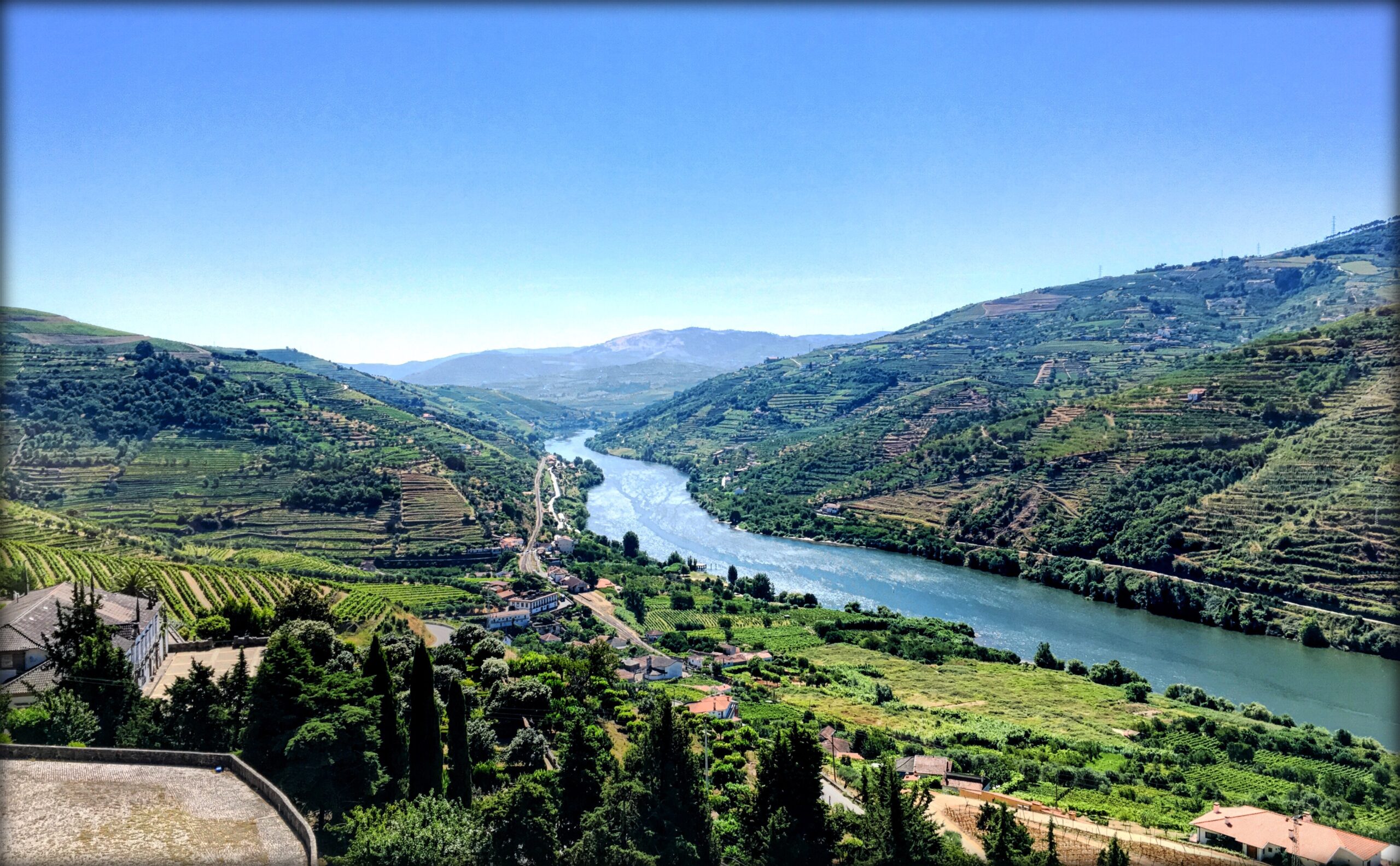Table To Farm – The Douro Valley – Porto, Portugal

Over the years, we’ve had our fair share of port wine. In fact, our love for them is why we came to Porto, the home of port wine. However, the wine isn’t made in Porto – it’s made to the east, in the Douro Valley. The wines then travel by boat down the Douro River to Porto, where they age in cellars and are eventually shipped all over the world. After doing some port tastings in Porto, it was time to head east to find the true home of port wine. Wanting to be able to fully enjoy the day and not worry about driving, we booked a small group tour that would take care of everything for us. We just had to sit back, relax, and sip.
The day started at 9:30, when we were picked up and taken on a two hour drive east along the Douro River. On the drive, we learned about the differences between the types of ports (Ruby versus Tawny versus White), what makes a vintage a vintage, and what makes the Douro Valley so special. As we entered the valley, we were immediately in awe of how beautiful it was. We stopped at a lookout point to take the picture which you are now enjoying. There are terraces upon terraces carved into the side of the mountains, with man made stone walls separating the layers. On those terraces are seemingly endless rows of grape vines. The terraces extend up the whole mountain – the amount of time and effort it took to plant all of these vines, and then to harvest the grapes each year, is unimaginable.
After taking in the views of the valley, we continued on to the Fonseca estate, where we walked though the vineyard and toured the facility. We saw large concrete vats where men still stomp on the grapes to get the juice. That sounded fun at first, but then we learned about the process. It takes 22 men four hours to stomp the grapes. For the first hour, they line up across the vat with a row of men on each side, slowly working their way towards each other until they meet in the center. They’re only stomping their way about five feet, and that takes an hour! The second hour, they do the same thing, but from the opposite direction. The final two hours are freeform stomping.
As we learned about the wine making process, we sampled five different types of ports. One of them was a vintage where we had to use a different technique to open the bottle. We heated forceps and applied heat and pressure to the bottle, under the cork, breaking the top of the bottle with the cork off in one, clean piece. This process is usually done for much older bottles where the integrity of the cork is compromised and at risk of breaking off into the bottle.
Afterwards, we went to lunch at a restaurant opened by one of Portugal’s master chefs (we don’t know who he is!). Lunch was a fancy affair, with three courses, each paired with a different, endless amount of wine. The food was excellent, but a little too stuffy for Kevin’s taste.
By this point in the day, it was getting hard to move. We were stuffed, liquored up and hot (the temperatures in the Douro Valley are notoriously hot; it was over 100 degrees). Our last stop was for a boat ride along the Douro River, which provided more amazing views and a break from the heat. Halfway into the ride, we dropped the anchor and most of the group jumped overboard. We forgot our suits, but Kevin made do in his boxers while Christine took pictures from the boat. After everyone cooled off, we ended the day with one final tasting – a 40 year tawny from a small production vineyard. We had to enjoy the little bit we had…when we asked about buying it, we were told that the vineyard is so small, they only sell to friends and family!
After the boat ride, we were herded into the van for the two hour drive back to Porto. It was a very quiet ride back to the city – everyone was feeling the effects of the alcohol and the heat. Overall, it was an amazing day. Although we have been drinking port wine for years, we knew very little about it. After a day in the Douro Valley, we knew enough to venture into one of Porto’s wine stores and have a very educational and informative conversation with one of their wine experts. We ended up walking away with two special bottles to bring home. Too bad we will have to wait at least 20 years to open one of them!
